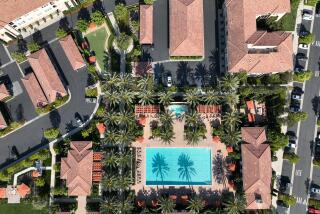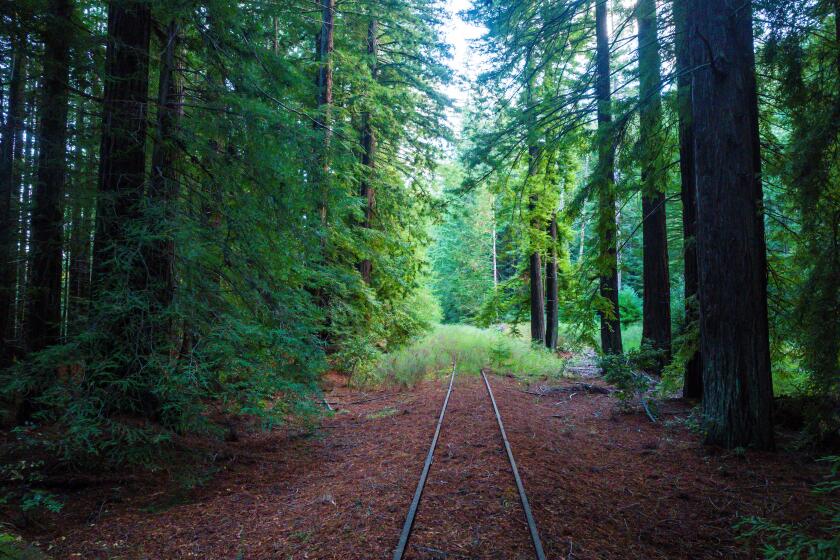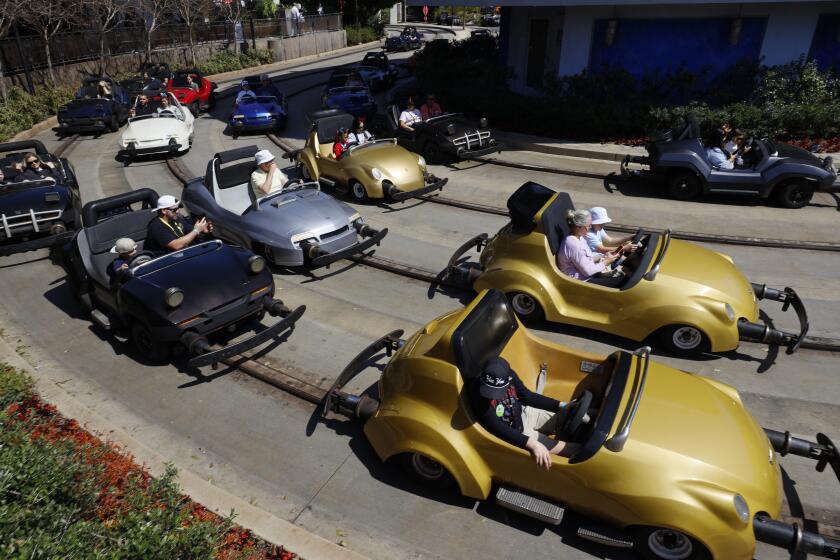If we lived at work, we’d be home by now
Someone recently asked me a simple question: Why is there traffic?
I babbled on for a while trying to give an answer that involved many elements: abundant land in the early 1900s, the freedom autos afford, historically cheap gas, zoning efforts that segregated housing from commercial and industrial areas, lack of coordinated planning, lack of investment in mass transit. And so on.
Yet I think there are two maps that explain it pretty well. The first shows the employment density -- jobs per square mile -- projected in Los Angeles County for the year 2030 by the Metropolitan Transportation Authority.
The colors on the map represent the predicted number of jobs per square mile:
White: 0 to 5,000
Green: 5,001 to 10,000
Yellow: 10,001 to 50,000
Orange: 50,001 to 100,000
Red: 100,001 to 244,918
Compare that with the Census Bureau’s map showing population density in the year 2000. It’s a basic map, and there are gaps in the data, but it gives you a general idea. The darker the color, the more people per square mile:
Light tan: 142 to 563
Dark tan: 4,390 to 5,787
Light green: 6,468 to 7,742
Green: 8,934 to 10,178
Dark green: 12,258 to 12,499
The maps together show that a lot of the jobs and the people are concentrated in different places. Thus, people have to drive to get where they’re going.
The agency is using the employment density map to justify expanding mass transit on the Westside. If it’s correct -- and it seems intuitive that it’s on base -- there will be a huge number of jobs from downtown to the ocean, notably in Beverly Hills, Century City and Westwood.
That’s also why it’s likely that later this summer or early this fall, the MTA, the local transportation agency, will say the best way to serve the Westside is to build a subway.
* Things are getting interesting again regarding the proposal to ask Los Angeles County voters in November to approve a half-cent-on-the-dollar sales tax increase to pay for mass transit and road projects.
Two pieces of legislation are needed to get it on the ballot. AB 2321, a bill that would allow the MTA to go forward with the sales tax vote, must be passed by the Legislature. And an ordinance that would allow the county Board of Supervisors to put the tax on the ballot must be passed by the MTA board at its meeting this month.
The state Senate Appropriations Committee was scheduled to hear AB 2321 on Monday, but last week it was delayed until Aug. 4. What does this mean?
In short, the MTA board members are expected to vote on a sales tax ordinance in late July, before they even know whether the Legislature will let them take it to voters.
The sales tax could end up printed on the ballot (the deadline to get it to the L.A. County registrar is Aug. 8) but not be legally valid. So even though it would be on the ballot, it wouldn’t really be on the ballot.
“If the legislature tinkers with it after our board acts, our board will have to schedule a special board meeting to deal with that, but there may not be enough time,” said MTA spokesman Marc Littman. “That’s where we are. After Aug. 8, it’s too late. If [the Legislature] changed it and it doesn’t match the ordinance that [the MTA board] adopted and put on the ballot, that’s a problem.”
* Although AB 2321 would set minimum funding levels for several projects ($900 million for a subway extension, for example), it would be up to the MTA to figure out how to spend the $30 billion or more that the sales tax would generate over the next 30 years.
Some elected state officials are leery of the spending plan.
Littman said MTA Chief Executive Roger Snoble was about to release a new plan that would try to show that many of the road improvements -- including those on the 5 Freeway -- would benefit parts of the county that may not get a new rail project, and that the money spent in some parts of the county would be proportional to the amount of tax expected to be paid there.
All that is a long way of saying that Snoble wants to convince public officials that not all the sales tax revenue would be dumped into two rail lines on the Westside, namely a subway extension and the second phase of the Expo Line.
--
Steve Hymon writes The Times’ blog about Southern California traffic and transportation in real time. Check it out at latimes.com/bottleneck.
More to Read
Start your day right
Sign up for Essential California for news, features and recommendations from the L.A. Times and beyond in your inbox six days a week.
You may occasionally receive promotional content from the Los Angeles Times.






